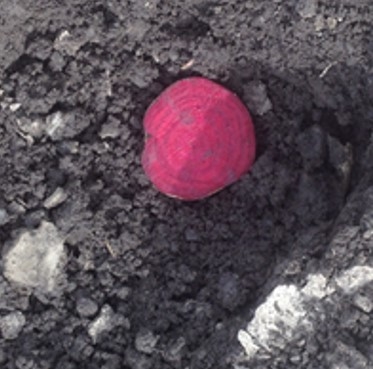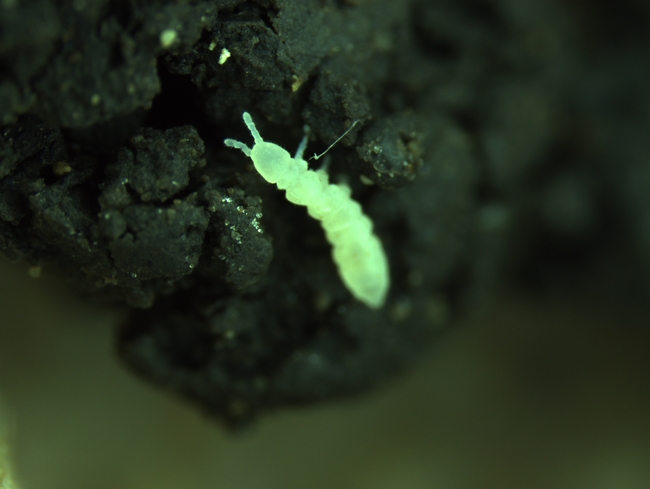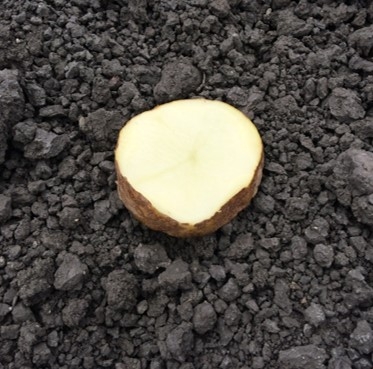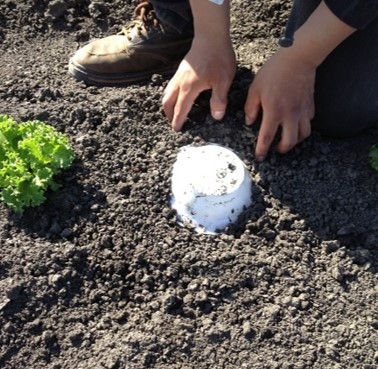The soil-dwelling springtail (Protaphorura fimata) is a serious pest of lettuce in the Salinas Valley of California. This springtail is ~ 2.5 mm long and white and has no jumping organ (furcula) and eyes. They feed primarily on the radicle of the germinating lettuce and broccoli seeds causing stunted seedling growth, and their high densities at planting is associated with poor lettuce stands. Most springtails are saprophytic feeders considered as beneficial organisms because they aid in the decomposition of decaying plant material, thereby contributing to the cycling of carbon and nitrogen, which in turn improves soil health and structure. These springtails typically known to feed on fungi in the soil.
There is no grower-friendly monitoring method to determine incidence and abundance of springtails in the lettuce and broccoli fields of California's central coast. Garden symphylan another soil-borne arthropod pest that occurs in vegetable fields, is commonly monitored using a potato slice bait. Potato slices are typically deployed on the soil surface, and they attract garden symphylan. The utility of potato slices for captures of springtail has not been investigated. Because potato slices are off-white in color, it might be difficult to quickly quantify lightly-colored arthropods such as springtail and garden symphylan on the potato surface. Beets are dark red in color and may provide background contrast and to help quantify lightly-colored organisms on it.
Recent research suggest that beet and potato attract springtail when placed in lettuce fields and these baits could be used to monitor in commercial field settings. It could only provide the presence or absence information, which might be still important to avoid unnecessary insecticide application with no or low captures on baits. Capture of springtails on the baits suggests that their populations are likely developing in the upper soil profile especially near the root system. Also, the incidence and abundance of springtail is subjected to soil moisture and their captures likely decline sharply as the upper soil layer loses moisture. It is likely that springtail populations multiply as the pre-plant irrigation is initiated. Monitoring the field using baits before or during the initial irrigation may provide an indication of active springtail population in the upper soil profile. Study also show that greater numbers of springtails were collected on beet one day after deployment than extended days of exposure. Perhaps deployment of baits for extended periods of time in soil may cause desiccation and make them less attractive to springtails.
Therefore, beet and potato can attract springtail in the soil and could be used for monitoring springtail.
If you are interested to read further on the published article, click the link below.
http://cemonterey.ucanr.edu/files/230154.pdf



